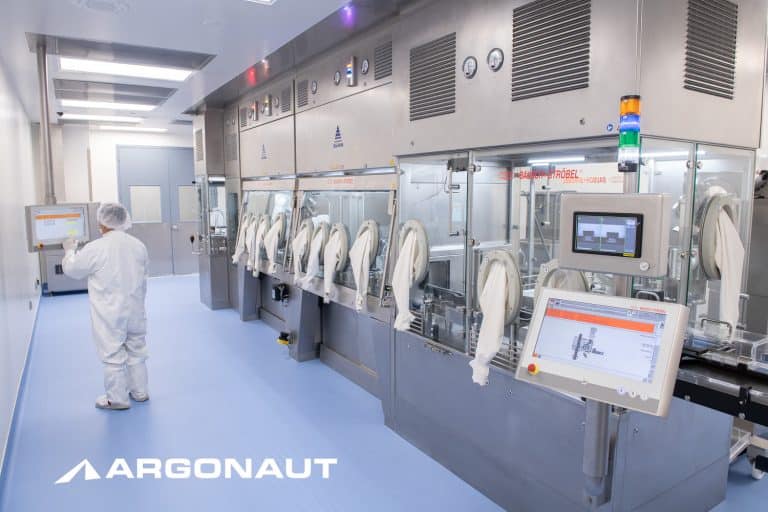Blockbuster drugs and one-size-fits-all treatments now share portfolio space with highly targeted therapies for smaller patient populations. This new era is an opportunity for savvy companies to create greater value, both for patients and themselves. Yet, while precision medicine offers many financial advantages to pharmaceutical manufacturers, the increased cost of targeted active pharmaceutical ingredients (APIs) creates new challenges. Learn how precision medicine will change pharmaceutical manufacturing, and how you can prepare.
The increased cost of targeted APIs creates new challenges.
Precision medicine is a departure from the classical pharma economic model. While wide-application drugs require large outcome studies, trials for targeted therapies are smaller and faster, making them less expensive to run. Patient advocacy groups even assist with recruiting in some cases. Though the number of potential patients for a precision therapy is much smaller than for a blockbuster drug, companies are now profiting on expensive therapies instead of on sheer volume. Additionally, the opportunity for successful approval is greater. Clinical success rates for rare disease therapies are at 26%, compared with just 11% for all categories. Many rare diseases currently have no alternate treatment available, increasing the likelihood that a drug will be approved and speeding its time to market. Reduced R&D costs without a decrease in revenue is a net positive for biopharma.
Despite these advantages, precision medicine faces several hurdles. Regulation is still evolving for both the therapies and the diagnostics that guide them, as is the insurance reimbursement framework. In order to truly scale, clinical adoption is key. Many diagnostics are based on cutting-edge technology, and education of physicians will be critical to their acceptance.
Precision medicine faces several hurdles.
Precision Medicine Manufacturing Strategies
With smaller but more focused patient populations and outsized API production costs, precision medicine requires a new manufacturing approach. For all but the widest-reaching therapies, the legacy model of single-product lines will lead to unused production time. Wasted equipment time translates to wasted dollars, so precision medicine manufacturers will likely opt for multi-product facilities. The flexibility to change between projects on a single line is key to this strategy. While some companies with wide precision pipelines may still opt for internal manufacturing equipment, many smaller pharma/biotech players will find ownership of a dedicated fill-finish line no longer cost-effective. Interestingly, 64% of FDA drug approvals in 2018 came from emerging pharma/biotech companies. This trend is driving outsourcing of pharmaceutical manufacturing. Working with a contract development and manufacturing organization (CDMO) removes the high overhead costs of owning a line that is not fully utilized and reduces time to market, as equipmentand expertiseare already in place.
Many smaller pharma/biotech players will find ownership of a dedicated fill-finish line no longer cost-effective.
As API costs increase, the loss of even a small volume during filling becomes expensive. New targeted therapies include biologics with high upstream production costs, which is driving advances in downstream filling technology to reduce waste. Modern fill/finish equipment now offers solutions, such as Bausch+Ströbel’s ADVANCEDfill technology, that virtually eliminate loss. Non-destructive inline weight checks can reduce loss due to nonconforming vials or overfilling. Similarly, strategies to minimize risk of a failed fill will continue to gain popularity as a cost-saving measure. The newest isolator technology offers better performance with regards to preventing costly contamination or particulate events.
These new manufacturing strategies are highly suited to precision medicine, but they come at a hefty price. Rather than undergoing the expensive process of replacing in-house equipment with newer lines, companies with precision portfolios may choose to outsource and let their CDMO shoulder the expense. Perhaps it is not surprising that pharmaceutical manufacturing outsourcing penetration is expected to increase to 40% by 2020. However, with fill-finish CDMO capacity reaching constraints, it may be wise to seek out CDMO partnerships now. State-of-the-art isolator and high-yield filling technology will be in especially high demand to support expensive APIs.
It may be wise to seek out CDMO partnerships now.
Regardless of whether precision medicine eventually overtakes the blockbuster drug model in popularity, there is no denying that it will continue to shape portfolios and manufacturing strategies for years to come. By looking ahead now, companies can position their manufacturing strategies to take advantage.
Ready to enjoy the benefits of these new manufacturing strategies? Contact Argonaut to learn about our state-of-the-art, high-yield aseptic filling line with isolator technology.


